[ad_1]
Rising meals and stopping off pests go hand in hand. Nevertheless they don’t ought to! There are inventive strategies to take care of damaging bugs away. The steps you take for the time being can create an inviting haven in your yard that encourages beneficials to stay awhile and damaging critters to take care of away.
Combining forces with Mother Nature instead of stopping it could create a magical habitat that allows us to develop meals and flowers with out the stress and heartache of shedding crops to pest hurt.
Listed below are six distinctive strategies to discourage pests. With these, you’ll leisure easy, understanding your most desired fruits and veggies will maintain safe.
Strategic Plantings of Lure Crops
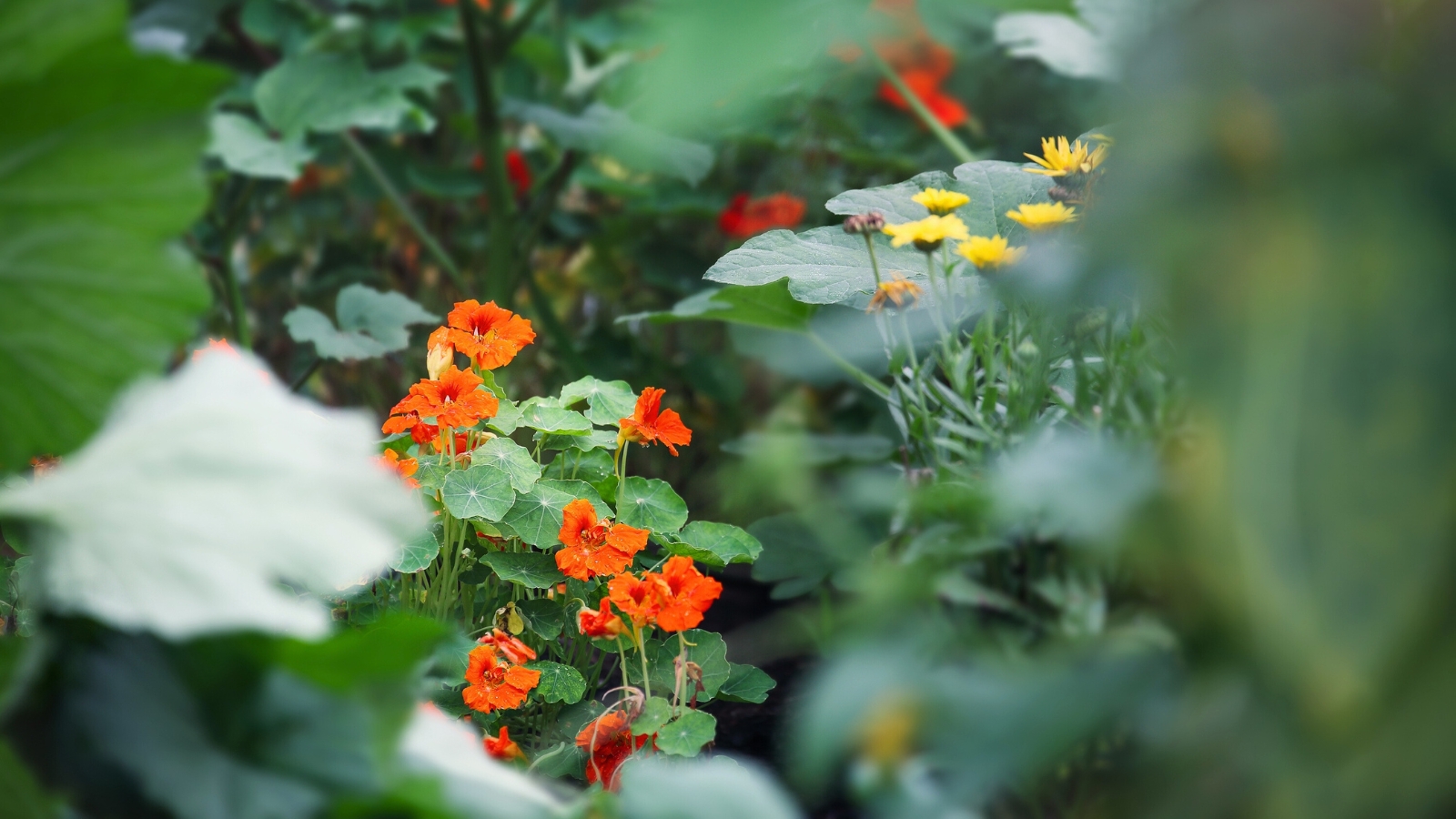

After years of battling with early-season cucumber beetles and squash bugs decimating our cucumbers, summer season squash, and zucchini, I lastly sowed Blue Hubbard squash. I let it arrange early. I planted it out near the long term squash and cucumber patches, so when it acquired right here time to transplant them, the Blue Hubbards have been rather a lot larger.
When the cucumber beetles began to hatch out, all our priceless cucumbers have been protected beneath insect netting, inaccessible to munch on. We scouted for bugs and eggs every morning and squashed any we seen on the Blue Hubbard vegetation. The remaining beetles flew off to a definite farm as a result of scarcity of meals.
As quickly as we eradicated the insect netting from the cucumbers, they’ve been well-established enough to tolerate some hurt. The vegetation remained healthful and high-yielding as a result of the beetle and bug populations have been very low.
In case you’re new to lure cropping, you may marvel why you may plant one factor shut by that attracts a pest. Take into consideration you’re hungry, and there are two decisions shut by. One is basically essentially the most delicious dish you solely dream of, and the alternative is a bland dish you eat typically. I assume you’d choose the delicious one, and the cucumber beetles did, too!
Specialists have been trialing Perimeter Lure Cropping (PTC) globally with quite a few vegetable mixtures with rather a lot success. It contains making a barrier of additional fascinating crops to block pests from reaching the center of a mattress, which contains your most revered crop. As a lot as 94% of pests will in all probability be alongside the perimeter, and PTC will help protect them there.
Totally different worthwhile lure crops:
- Nasturtiums and radishes will attraction to flea beetles.
- Use calendula to lure aphids.
- Lure cabbage worms with collard greens or delicate Asian greens to protect brassicas.
- Ants and stink bugs are drawn to sunflowers.
Skilled tip: Proceed to scout the lure crops and destroy pests as they arrive up. Failure to take motion will set off them to destroy the lure crop and switch on to your further useful crops.
Plant Repelling and Attracting Herbs and Flowers
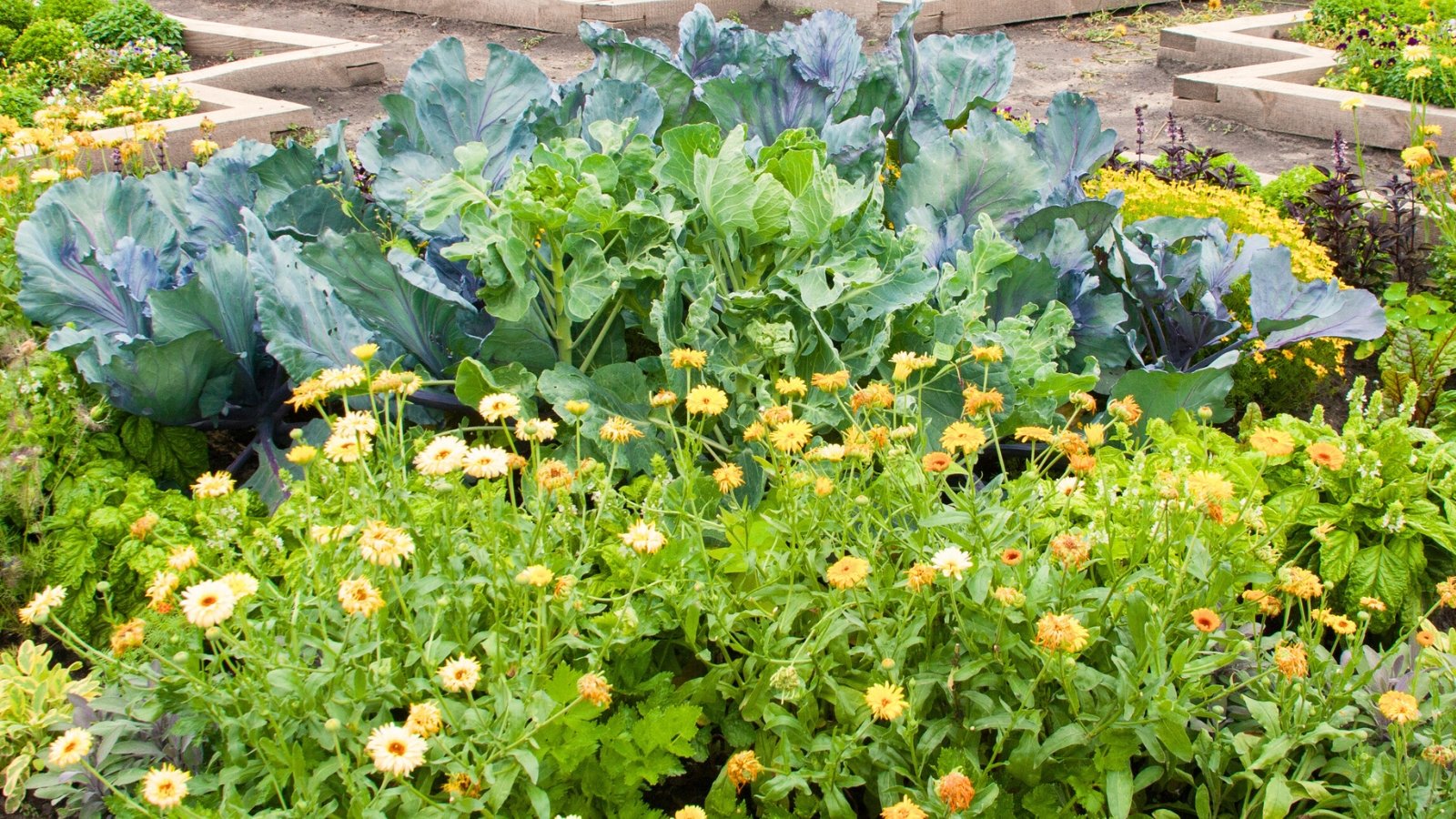

Associated in effectiveness to lure cropping, planting strongly scented herbs and flowers would possibly assist deter pests by difficult or disgusting them. The good news is, just a few of those is also devices you consider to develop anyway! Listed below are quite a few:
Plant this alongside your carrots to discourage carrot flies, and with tomatoes to forestall the tomato hornworm.
Specialists contemplate rosemary repels the dreaded cabbage moth, one of many essential damaging pests. It would moreover protect away aphids and carrot flies, so place it strategically.
Whereas I actually just like the up to date scent a warmth breeze brings when mint is shut by, most animals detest it. Mice, some flies, spiders, fleas, and ants don’t respect mint. Plant it in pots so it doesn’t take over, and switch it spherical as needed for pest administration.
Marigolds, with their chemical substance limonene, might help deter whiteflies and underground, root-damaging nematodes, significantly within the occasion that they’ve been rising in an house as a result of the sooner season. I on a regular basis sow further marigolds throughout the spring and plant them spherical my fields as a pure pest deterrent. I’ve created a fence line of them near newly planted fruit timber, raspberry bushes, beds of head lettuce, and brassicas.
This extremely efficient herb is like citronella and may help protect away mice, rats, ants, and ticks. Harvest it for hand-crafted curries, broths, and marinades.
Chances are you’ll on no account have too many alliums spherical to help repel deer, rabbits, and mice. Nevertheless are you aware they might moreover protect carrot flies, cabbage worms, and aphids away? Use these as an environment friendly PTC or companion plant for brassicas, tomatoes, and carrots. Seek for perennial alliums for year-round magnificence.
On warmth, sunny days, lavender releases the chemical camphor, efficiently repelling mosquitoes, fleas, flies, moths, deer, and flooring critters. This lovely plant moreover attracts pollinators like bees and butterflies.
The spicy scent of nasturtiums might confuse pests similar to the dreaded Colorado Potato Beetle, inflicting them to fly away out of your loved one potato vegetation. Nasturtiums moreover attraction to helpful bugs like ladybugs and lacewings and will perform a lure crop, decreasing hurt to your cash crops. Lacewings will protect whitefly populations down, whereas ladybugs will feast on aphids. Select a trailing choice and place it in a window area shut by, or plant a bush choice alongside the edges of your beds.
This lovely herbaceous plant will attraction to hummingbirds, butterflies, bees, lacewings, and ladybugs, potent pollinators and predators of gnats, aphids, aunts, weevils, mosquitoes, and totally different egg larvae.
When you will have factors with roaches, ants, spider mites, or Japanese beetles, place this all via your yard or as a PTC. Chrysanthemums comprise pyrethrum, a pure pesticide that helps protect these pests away.
Together with plant repellents, try confirmed scientific-backed companion planting to help deter pests, enhance yields, and protect vegetation healthful. Listed below are just a few of our favorite extraordinarily environment friendly companions.
Use Bodily Limitations
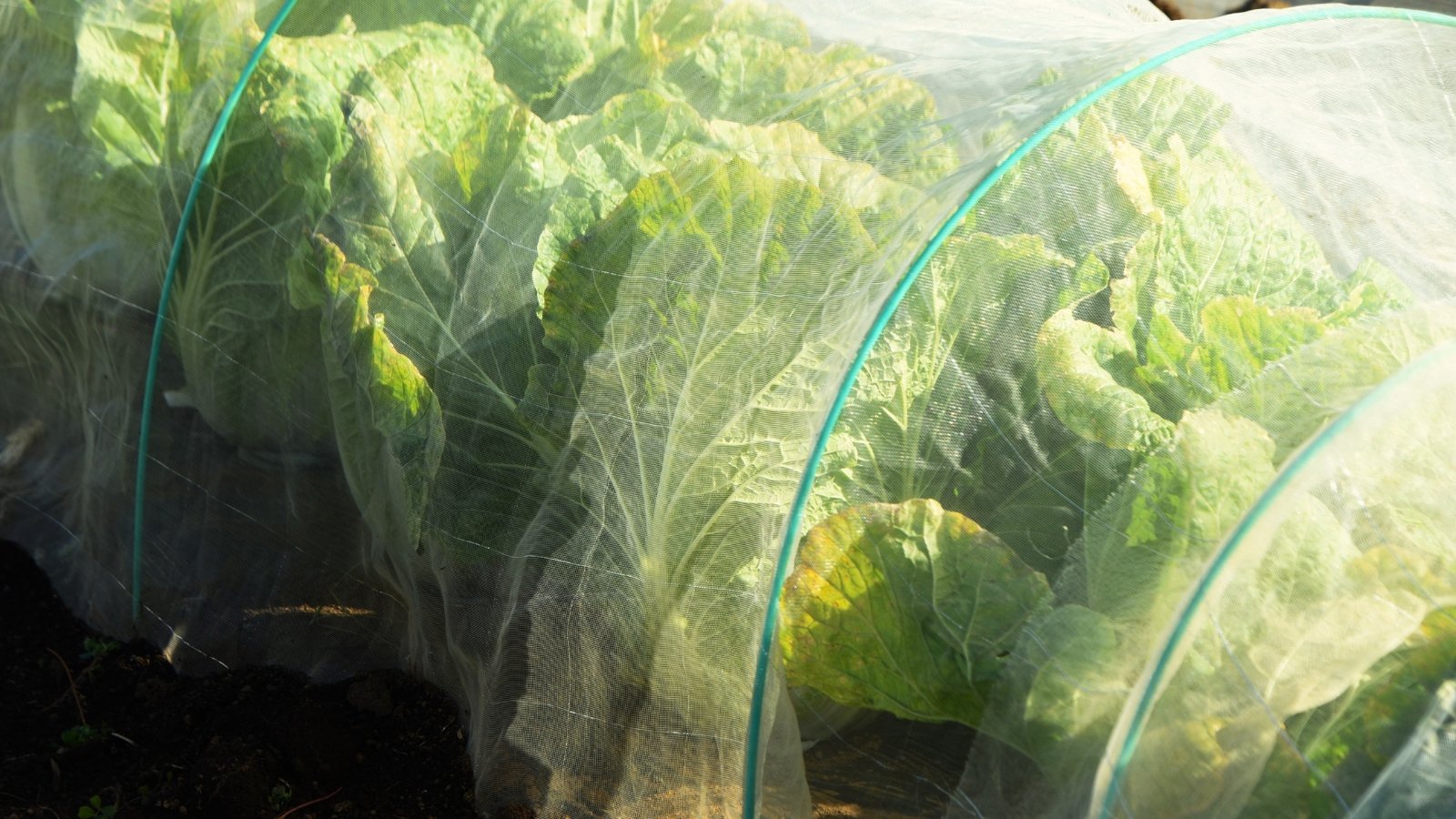

Tried and true, row cowl and bug netting defend crops from pests and reduce hurt. Row cowl is best used all through the cooler months of spring and fall. In another case, lightweight and breathable insect netting is impressed.
In case you’re eager to spend cash on insect netting, it’s merely accessible and intensely environment friendly. Use netting with or with out hoops and weight baggage and assure your whole crop is roofed. Depart headspace on extraordinarily sought-after crops like kale and broccoli. Bugs might lay eggs via the netting if it sits immediately on the plant. Daisy-chain and retailer the netting in a container with a lid all through the off-season to stay away from hurt. Restore any tears and holes sooner than using it subsequent season.
Skilled tip: Seek for self-pollinating cultivars while you experience excessive factors whereas bulking up your navy of helpful bugs. The vegetation obtained’t need to be freed from insect netting and may nonetheless current you ample yields with out insect pollination!
Delayed Plantings
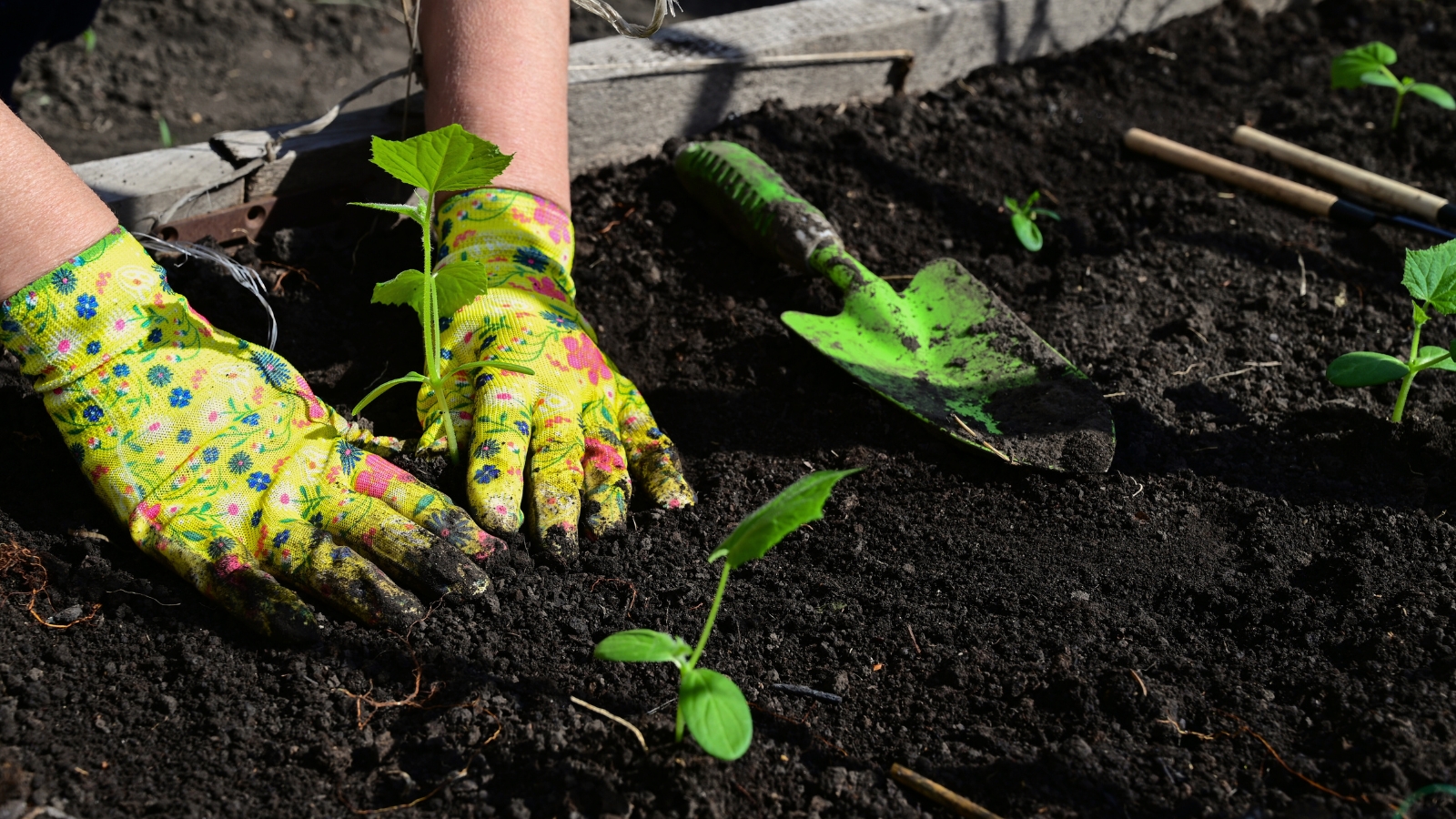

This technique is very easy it’s almost unbelievable when it’s environment friendly. Most bugs have an on a regular basis and pretty predictable life cycle. In case you’ve been gardening for some time, you in all probability have psychological notes of when certain pests start to current their faces.
Pests that overwinter throughout the soil intentionally choose your space on account of they acknowledge the abundance of accessible meals throughout the fall. Take into consideration their confusion as soon as they emerge throughout the spring or summer season and uncover there could also be nothing for them to feast on. They may feed on quite a few a lot much less palatable crops sooner than shifting onto one other particular person’s yard, nevertheless quite a few days might make the entire distinction when you possibly can keep off on transplanting.
As an illustration, while you normally plant the first spherical of cucumbers in late April, nevertheless they get destroyed by cucumber beetles, try delaying the planting by six to eight days. Pay attention to the outcomes and regulate the dates as needed. In case you let the vegetation get established, they’re going to tolerate further hurt than within the occasion that they’ve been newly transplanted and small.
Skilled tip: Combine delayed planting and a bodily barrier by masking the vegetation with insect netting to really protect pests away. Take away the netting when flowering begins to allow pollination, or select parthenocarpic cultivars, which can be self-pollinating and produce solely female flowers.
Entice Helpful Bugs
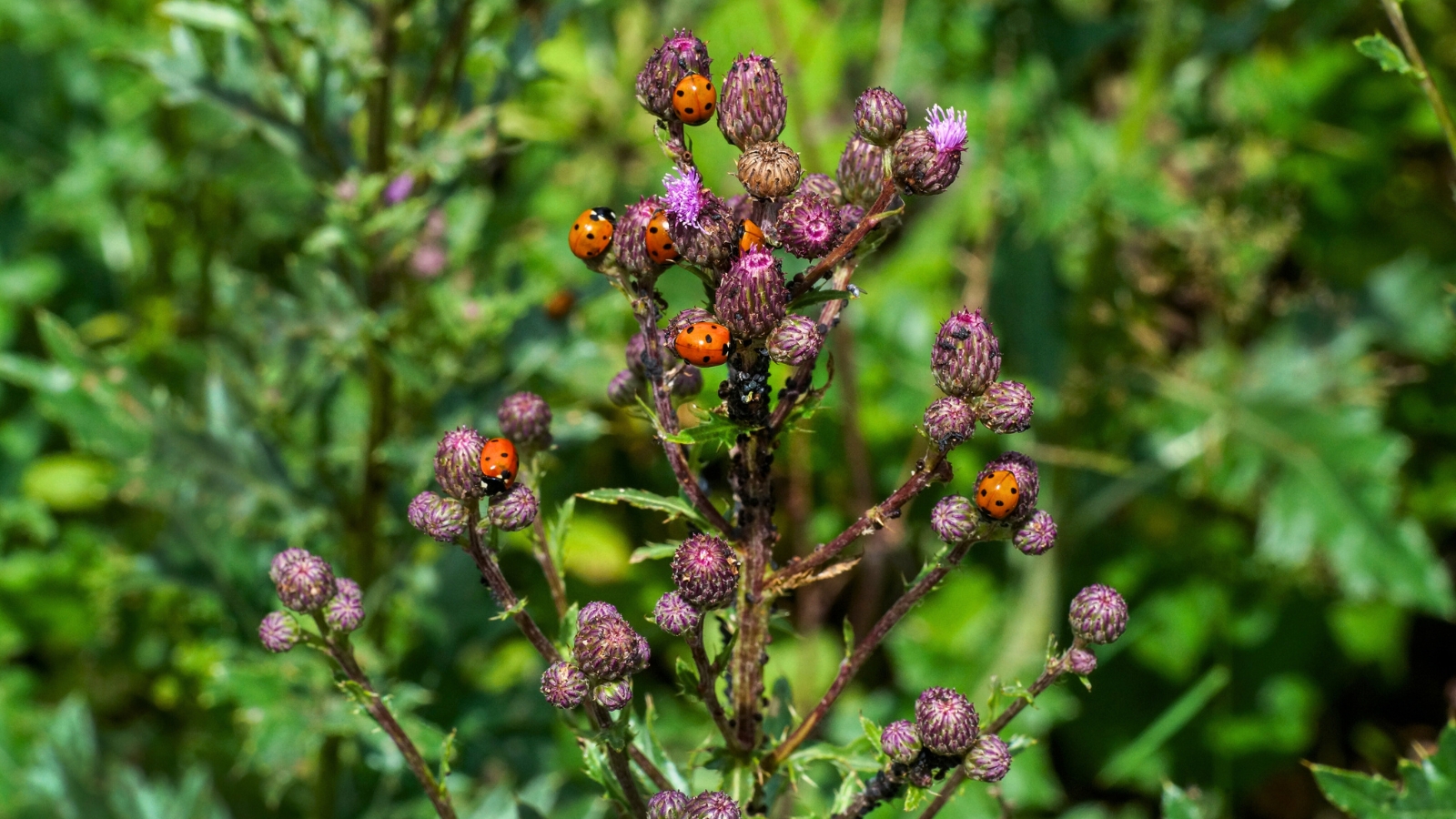

Not all bugs are pests. You might want to attraction to many helpful bugs that may provide help to organically administration the ecosystem. When you will have an unused nook, commit the world to create an insectary house to lure these bugs in, lay eggs, and elevate their brood proper right here. If there could also be enough meals for predators like ladybugs, lacewings, and hoverflies, they’ll stick spherical and elevate many generations of these helpful creatures, allowing you to reap the benefits.
Depart these areas to stay wild and keep dense. Don’t mow or disturb them rather a lot so that they’ll actually really feel safe and as close to their pure habitat as you’ll create. Transitioning to no-till gardening might help and has many further benefits, along with soil nicely being, weed administration, moisture retention, and decreased erosion. Current a clear water provide, assemble nest containers, depart piles of brush spherical, and stay away from spraying chemical pesticides.
Embrace natives like milkweed, goldenrod, and yarrow and powerhouses like alyssum, phacelia, marigolds, salvia, and bee balm. Diversification of root strategies and plant types will attraction to a wide range of helpful bugs, so worry a lot much less about neat rows of reds and pinks and embrace the wildness of a mixed-bag yard.
Key Takeaways
- Lure crop and allow nature to do among the many provide the outcomes you need.
- Perception the science of companion planting.
- Plant herbs and strongly-scented flowers to discourage pests whereas attracting helpful bugs.
- To stay away from the first spherical of damaging pests, try delaying your plantings of extraordinarily sought-after vegetation like summer season squash, tomatoes, and cucumbers.
- Benefit from bodily boundaries as vegetation arrange or seek out parthenocarpic cultivars.
[ad_2]
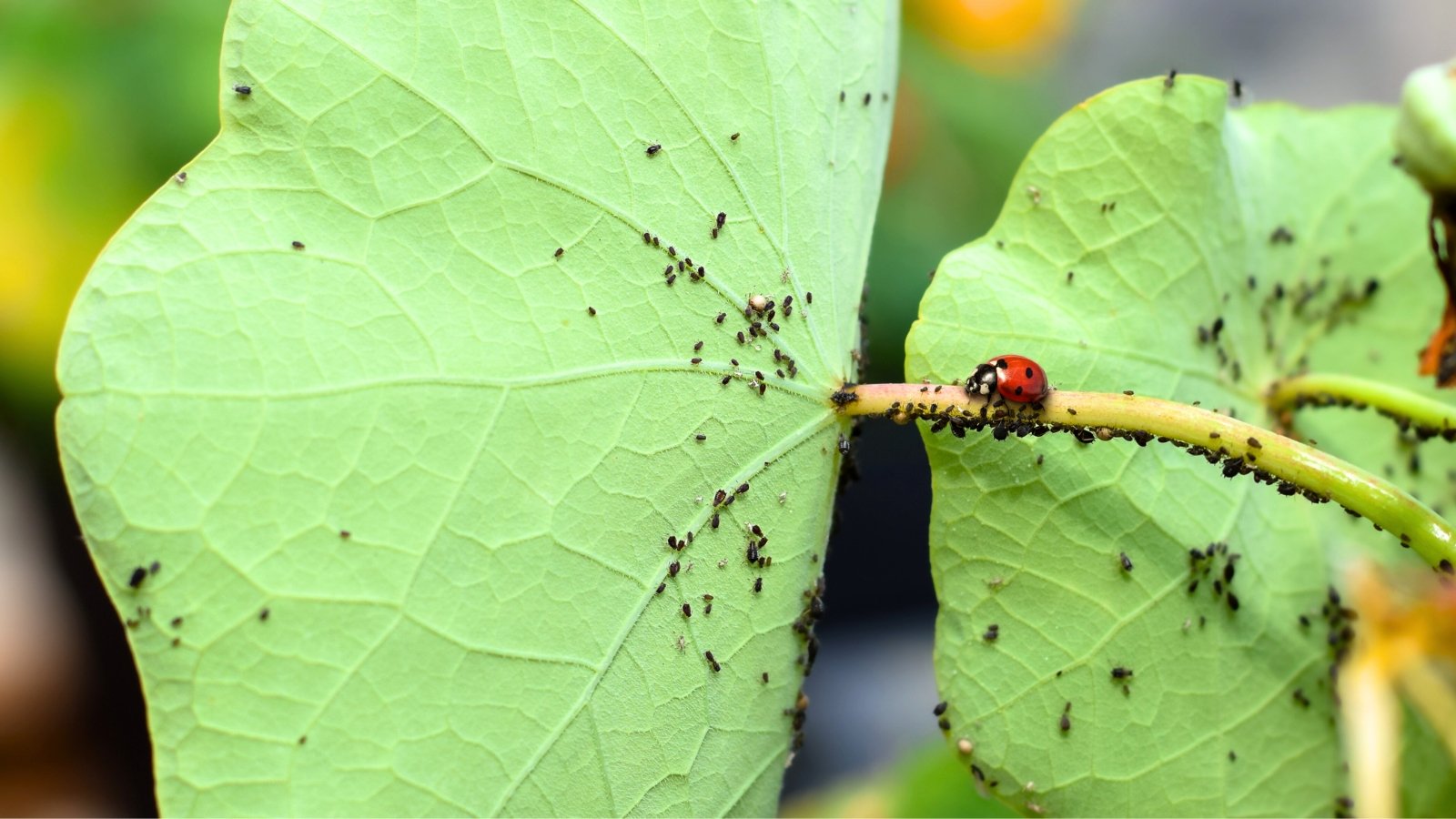

It’s refreshing to read about natural methods for pest control rather than chemical solutions. These approaches not only protect crops but also promote biodiversity, which is essential for a healthy ecosystem.
I appreciate the detailed explanations of different pest deterrent plants. Understanding how certain herbs can influence pest behavior helps in making more informed decisions for sustainable gardening practices.
The information about companion planting is quite insightful. I’ve never thought about using specific herbs to repel pests while simultaneously attracting beneficial insects. This could definitely change how I approach my gardening.
The tips on delayed plantings are particularly useful. Timing seems crucial in pest management, and I look forward to experimenting with this strategy next planting season for better results.
I found the concept of trap cropping really interesting. It’s a clever way to manage pests without relying solely on chemicals. I’m curious to see how effective it will be in my own garden.